How many miles across is the United States? The short answer is, it depends. Now let’s talk about the longer answer.
The United States is the third largest country in the world in terms of total land area, behind only Russia and Canada. Hawaii and the massive state of Alaska are included in this assessment, of course. If the contiguous 48 states alone represented the whole U.S. territory, the nation would drop to the world’s fifth-largest country as China and Brazil would surpass it.
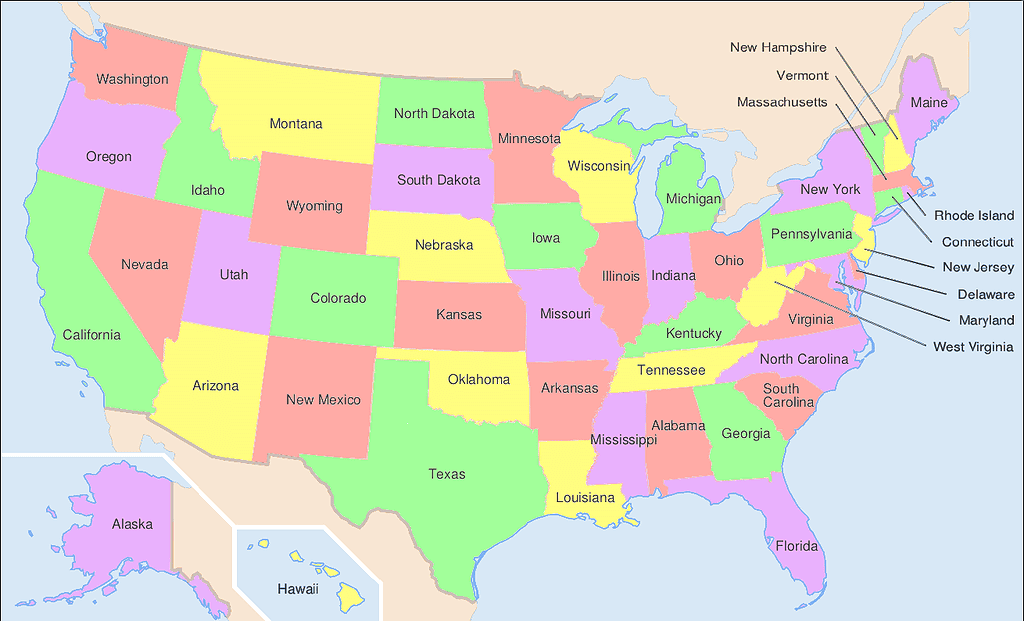
The United States is the world’s third-largest nation by land area.
©User:Wapcaplet in Inkscape / CC BY-SA 3.0 – Original / License
How Many Miles Across Is the U.S.?
The distances across the U.S. vary widely depending on the chosen measuring points. Here are the distances across the nation taken from a few different significant locations.

The West Quoddy Head Lighthouse is the easternmost point in the lower 48 states.
©James W. Thompson/Shutterstock.com
Despite its ironic “West” name, West Quoddy Head, Maine, is the easternmost point in the contiguous 48 states. The distance from West Quoddy Head along the parallel to the Pacific coast in Washington State is 2,742 miles, representing the furthest east-to-west distance in the lower 48 states. The driving distance is about 3,600 miles if you remain on U.S. roads. You could shave about 300 miles off the drive by traveling through both the U.S. and Canada.
The shortest distance from coast to coast in the contiguous United States is over 650 miles less than that. The fewest miles between the coasts are measured from a point twelve miles south of San Diego, California, in the west to a point ten miles south of Brunswick, Georgia, in the east. There are 2,089 miles between those points. The driving distance would be around 2,400 miles.
The furthest distance between two points not measured along a parallel in the lower 48 states is from West Quoddy Head in Maine and Point Arena, California. 2,892 miles separate those two points.
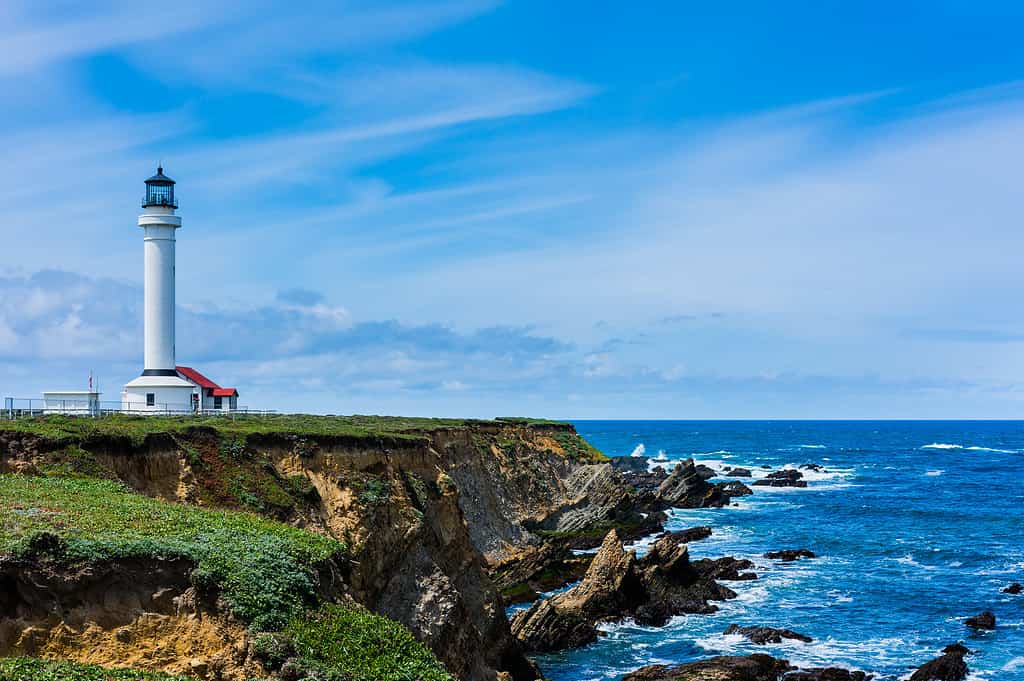
The Point Arena Lighthouse is located in California and marks the furthest distance from the lighthouse in West Quoddy Head, Maine, in the contiguous U.S.
© Andrew Zarivny/Shutterstock.com
Alaska and Hawaii
The distances across the United States jump significantly when we include the 49th and 50th states.
West Quoddy Head is 4,831 miles from Cape Wrangell, Alaska, the westernmost point in Alaska and the United States as a whole.
Kure Atoll, the northernmost atoll of the Hawaiian archipelago, is 5,797 miles from West Quoddy Head.
The furthest distance between two points in the 50 states is the distance between Log Point, Elliot Key, Florida, and Kure Atoll. Those locations are separated by 5,859 miles.
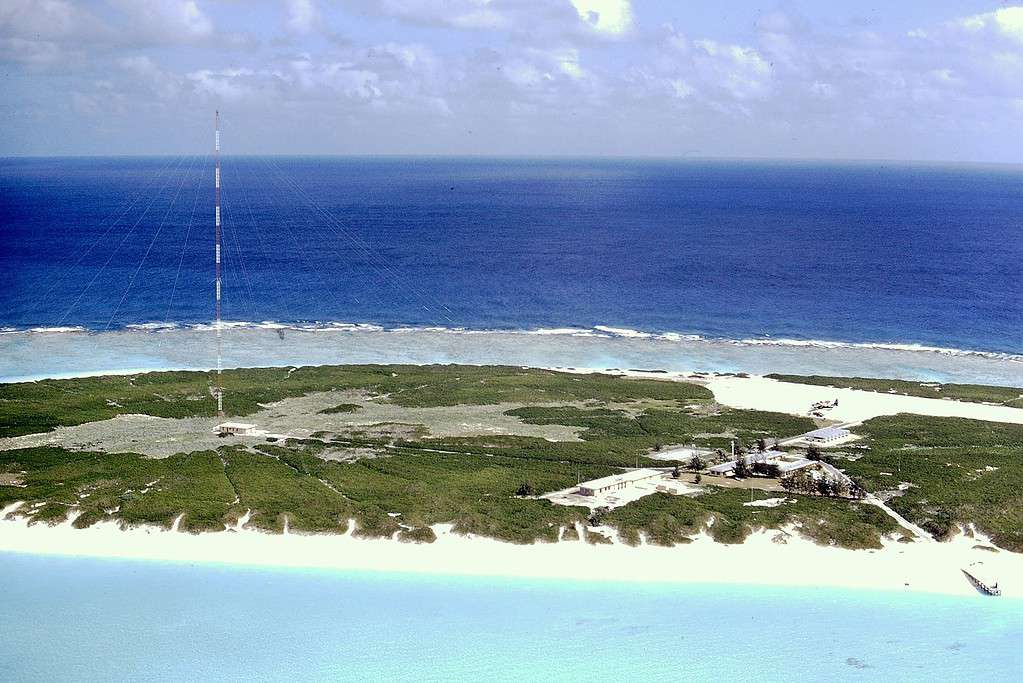
Kure Atoll is almost 5,800 miles from West Quoddy Head, Maine.
©Jigreenberg at English Wikipedia / CC BY 3.0 – Original / License
U.S. Territories
The United States has sovereign territories that are not included in the 50 states. When these territories are included in the calculations, the distances between the furthest points jump even higher.
East Point, St. Croix, in the U.S. Virgin Islands, is the easternmost point of any U.S. territory. The distance from that location to Cape Wrangell, Alaska, is 6,501 miles.
Orote Point in Guam is the most western point of any U.S. territory. It is situated 7,747 miles from West Quoddy Head, Maine.
And finally, the absolute longest distance between any two points on U.S. sovereign soil is the distance between East Point, St. Croix, and Orote Point, Guam. They are separated by 9,514 miles. That is the same as three and a half continental United States laid end to end!
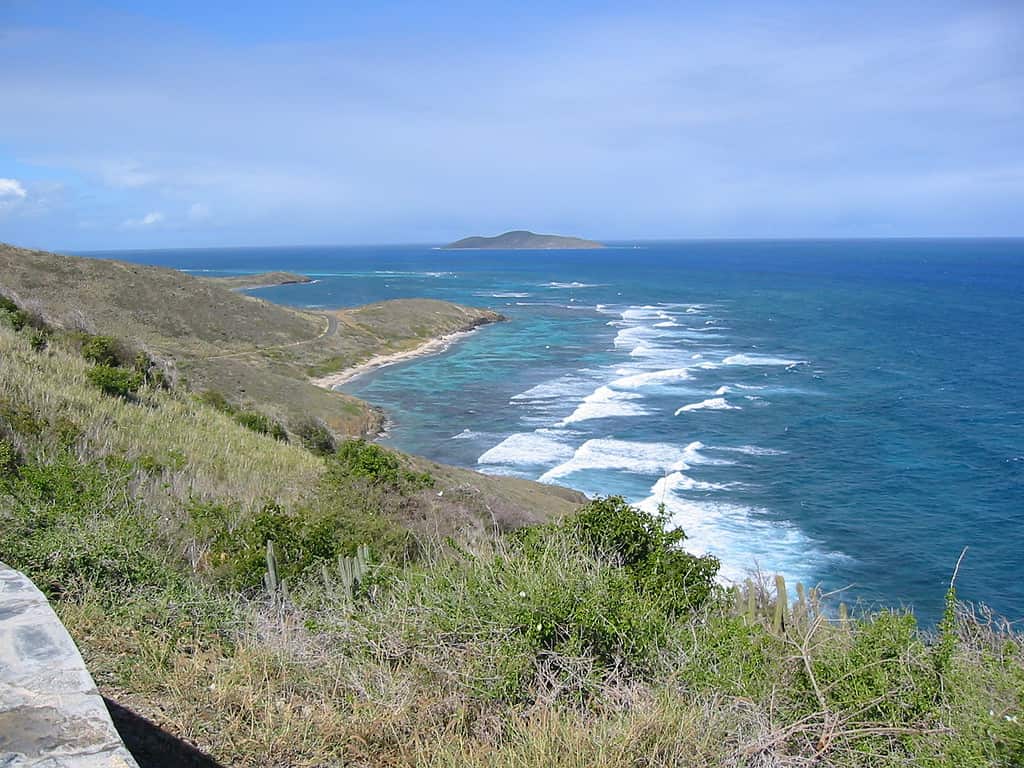
East Point in St. Croix is the easternmost point of all U.S. Territory.
The Longest State
Alaska is about 2,700 miles wide, easily making it the longest state measuring west to east. It’s also the biggest state north to south, and any other way it can be measured. If Alaska was a sovereign nation, it would be the 18th largest country in the world.

Not sure just how big Alaska is? Here’s a comparison with the 48 contiguous states.
The Shortest State
Rhode Island is the shortest U.S. state, measuring west to east. This smallest U.S. state is only 37 miles wide. It would take 73 Rhode Islands laid side-by-side to equal the width of Alaska.
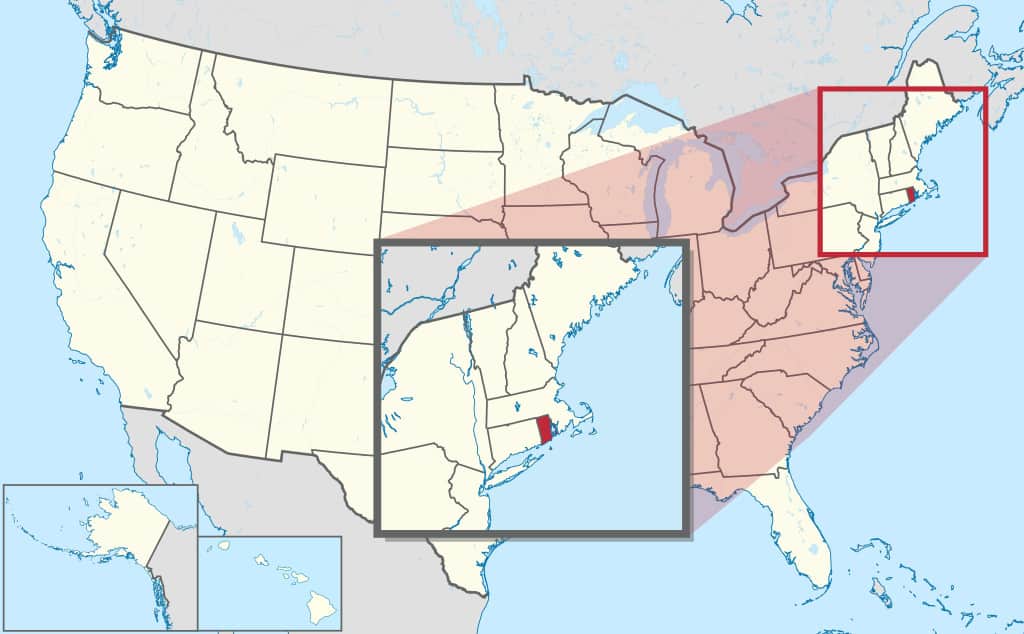
It’s no secret that Rhode Island is the smallest state. You have to zoom in just to see it on a map.
The Westernmost and Easternmost State
Speaking of Alaska, it is the westernmost state in the United States, as noted earlier. However, technically speaking, it is also the easternmost state. How is this possible? Semisopochnoi Island in Alaska crosses the 180º Meridian into the eastern hemisphere. So, longitudinally speaking, Alaska is both the westernmost and easternmost state in the U.S.
This is really just useful for trivia, though. For almost all practical purposes, West Quoddy Head is still the most-eastern point in the 50 states, and East Point, St. Croix is still the easternmost of all U.S. territory.
The photo featured at the top of this post is © Traselu / CC BY-SA 4.0 – License / Original
Thank you for reading! Have some feedback for us? Contact the AZ Animals editorial team.







